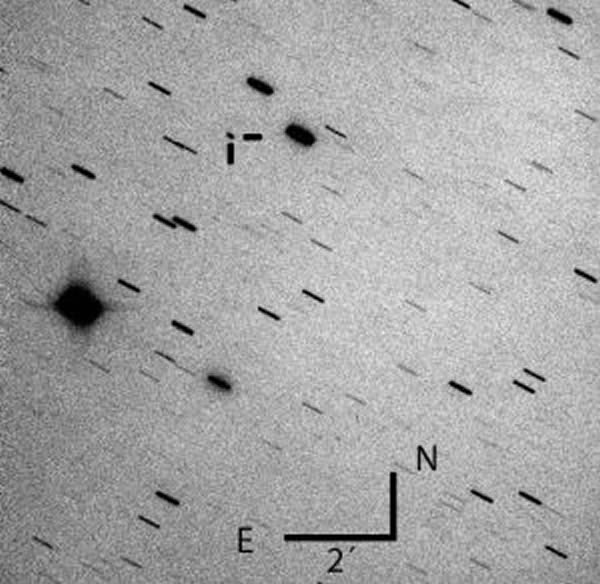Asteroid 'Beast' to Fly By Earth on Sunday
Asteroid 2014 HQ124(uux.cn)
A new-found huge asteroid, nicknamed "The Beast," is expected zoom by Earth this weekend.
The asteroid 2014 HQ124, which is the size of a football stadium, poses no chance of hitting Earth in its flyby on Sunday (June 8), and will pass by at a range of three times the distance between the Earth-moon on Sunday (June 8). It was discovered on April 23 by NASA's Wide-Field Infrared Survey Explorer, a sky-mapping space telescope.
The mammoth asteroid 2014 HQ124 is about 1,100 feet (352 meters) across, according to scientists with NASA's Asteroid Watch program at the Jet Propulsion Laboratory in Pasadena, Calif.
Asteroid 2014 HQ124 will be traveling up to 31,000 mph (14 km/s) -- 17 times faster than a shot from a high-speed rifle -- when it makes its closest approach to Earth on Sunday at 1:56 a.m. EDT (0556 GMT) at three lunar distances away. One lunar distance, or the distance between the Earth and the moon, is about 238,855 miles (384,400 kilometers).
Astronomer Bob Berman, of the online Slooh community observatory, said it is "disconcerting" that an asteroid this large flying so close to the planet was only spotted less than two months before its nearest approach to Earth. Slooh held a special event on Thursday previewing the close approach of 2014 HQ124.
"HQ124 is at least 10 times bigger, and possibly 20 times, than the asteroid that injured a thousand people last year in Chelyabinsk, Siberia," Berman said in a statement. "If it were impact us, the energy released would be measured not in kilotons like the atomic bombs that ended World War II, but in H-bomb type megatons."
NASA estimates that more than 90 percent of the mountain-sized near-Earth asteroids, or objects wider than 0.6 miles (1 km), have been discovered. A space rock of this size could unleash global destruction if it were to collide with Earth.
Smaller asteroids have been much more elusive. There are believed to be 15,000 near-Earth asteroids 460 feet (140 m) wide, and of these, only about 30 percent of those have been found. Meanwhile, NASA scientists estimate that there are more than 1 million near-Earth objects with a diameter of about 100 feet (30 m); less than 1 percent of those have been detected.(Jun 5, 2014 06:40 PM ET // by Megan Gannon, SPACE.com News Editor)













